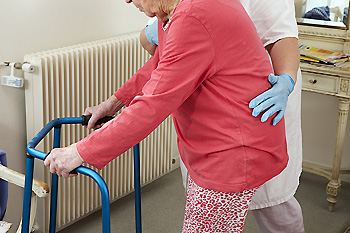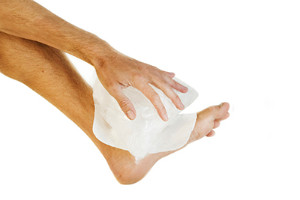
The reality of a senior being susceptible to enduring a fall or tumble is serious and nothing to take lightly. Often, as an individual gets older, they might be unwilling to admit the growing likelihood of this kind of occurrence. However, a caretaker or loved one is capable of making a senior aware of this risk by having a simple conversation. Initiating productive conversations with a senior about the reality of enduring a fall can help make the senior more aware of ways to prevent such an injury from happening. For example, having these discussions with seniors can perhaps encourage them to take better care of the health of their feet, making foot care a more important part of their life. After initiating this dialogue with a senior, they also might be more mindful of how they can increase their foot's strength. Contact a podiatrist today if you have any questions or concerns about falls prevention.
Preventing falls among the elderly is very important. If you are older and have fallen or fear that you are prone to falling, consult with one of our podiatrists from Foot Health Center of Merrimack Valley. Our doctors will assess your condition and provide you with quality advice and care.
Every 11 seconds, an elderly American is being treated in an emergency room for a fall related injury. Falls are the leading cause of head and hip injuries for those 65 and older. Due to decreases in strength, balance, senses, and lack of awareness, elderly persons are very susceptible to falling. Thankfully, there are a number of things older persons can do to prevent falls.
How to Prevent Falls
Some effective methods that older persons can do to prevent falls include:
- Enrolling in strength and balance exercise program to increase balance and strength
- Periodically having your sight and hearing checked
- Discuss any medications you have with a doctor to see if it increases the risk of falling
- Clearing the house of falling hazards and installing devices like grab bars and railings
- Utilizing a walker or cane
- Wearing shoes that provide good support and cushioning
- Talking to family members about falling and increasing awareness
Falling can be a traumatic and embarrassing experience for elderly persons; this can make them less willing to leave the house, and less willing to talk to someone about their fears of falling. Doing such things, however, will increase the likelihood of tripping or losing one’s balance. Knowing the causes of falling and how to prevent them is the best way to mitigate the risk of serious injury.
If you have any questions, please feel free to contact one of our offices located in North Andover, and Tewksbury, MA . We offer the newest diagnostic and treatment technologies for all your foot care needs.















